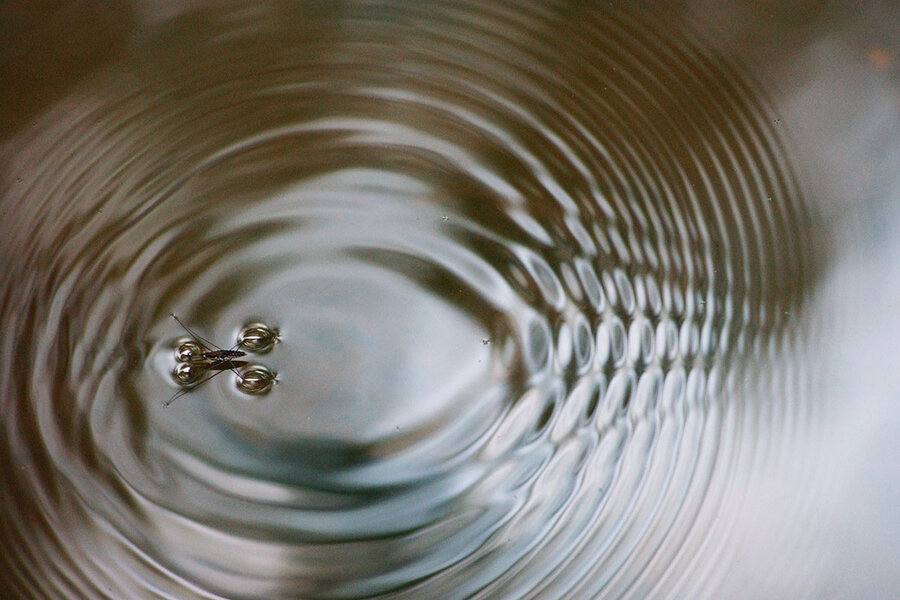Water: An in-depth look at the surface
Loading...
Compared with most liquids, water has an incredibly high surface tension. Changing the surface tension can make things move in strange ways.
Demonstration 1: Cut the tension
Materials: Cup, paper clip, dish soap
Why We Wrote This
Children love to play with water. But water can also be a great medium to explore scientific concepts. This series of experiments delves into the properties of surface tension.
Steel is too dense to float in water, but you can get it to rest on top. And you can sink it using nothing but a drop of soap.
Instructions: Fill a cup with water, and gently place a clean, dry paper clip on the water’s surface so it rests on top. You should be able to see the water’s surface bend and bulge slightly from the weight of the paper clip.
Now place a single drop of dish soap on the surface water near the paper clip. The clip will suddenly sink to the bottom of the cup.
Explanation: You’ve probably noticed that when you sprinkle water on a smooth surface, it will form little round droplets instead of spreading out evenly. That’s because the molecules in the water are attracted to one another. Molecules in the center of the water, being surrounded on all sides, are pulled equally in all directions. But the ones near the water’s surface are pulled only toward the water and not toward the air. This creates what scientists call surface tension, a thin “skin” on the water that can support the weight of a paper clip.
One of the ways dish soap works is by reducing the water’s surface tension, allowing the water to penetrate the tiny holes and cracks in dishes and wash away embedded grime. When you add soap to the water holding up the paper clip, the water loses surface tension and the paper clip breaks the skin and sinks.
Demonstration 2: Nothing to sneeze at
Materials: Saucer, ground black pepper flakes, dish soap
What happens to objects floating on the water when you change its surface tension? With this demonstration, you’ll find out.
Instructions: Pour a small amount of water into a saucer or shallow dish and sprinkle some pepper flakes on the water’s surface. Then place a drop of soap in the center. The pepper will suddenly scatter to the edges of the dish.
Explanation: John W. M. Bush, a fluid dynamicist at the Massachusetts Institute of Technology, explains how this is an example of the Marangoni effect, in which a liquid with high surface tension will pull more strongly on the surrounding liquid than one with a low surface tension.
“By putting the soap on, you decrease the surface tension locally, and so the surface tension is higher outside of the soap, so the soap then spreads,” he says. “And things are going to be swept out with it.”
Demonstration 3: A clean getaway
Materials: Large dish or tray, toothpick, dish soap
The Marangoni effect can be used for more than just scattering pepper; it can also propel a tiny “boat” across the water.
Instructions: Fill a tray an inch or so deep with water. Then drop a bit of soap on the end of the toothpick and place it gently on the surface of the water. The toothpick will move across the surface of the water like a motorboat.
Explanation: With soap only on the end of the toothpick, the surface tension at the bow is higher than at the stern. “You have larger surface tension in the front than in the soapy end and at the back, and so that’s why the thing has an unbalanced tensile force which pulls it forward,” says Dr. Bush.
Some water insects use the Marangoni effect to make quick escapes, says Bush. Species of Microvelia and Velia, which tend to live near the water’s edge, will excrete a surfactant upon accidentally falling onto the water that will scoot them across the surface to safety.
This column first appeared in the Aug. 20, 2018 edition of The Christian Science Monitor Weekly magazine as part of the Monitor's occasional Science at Home series.








